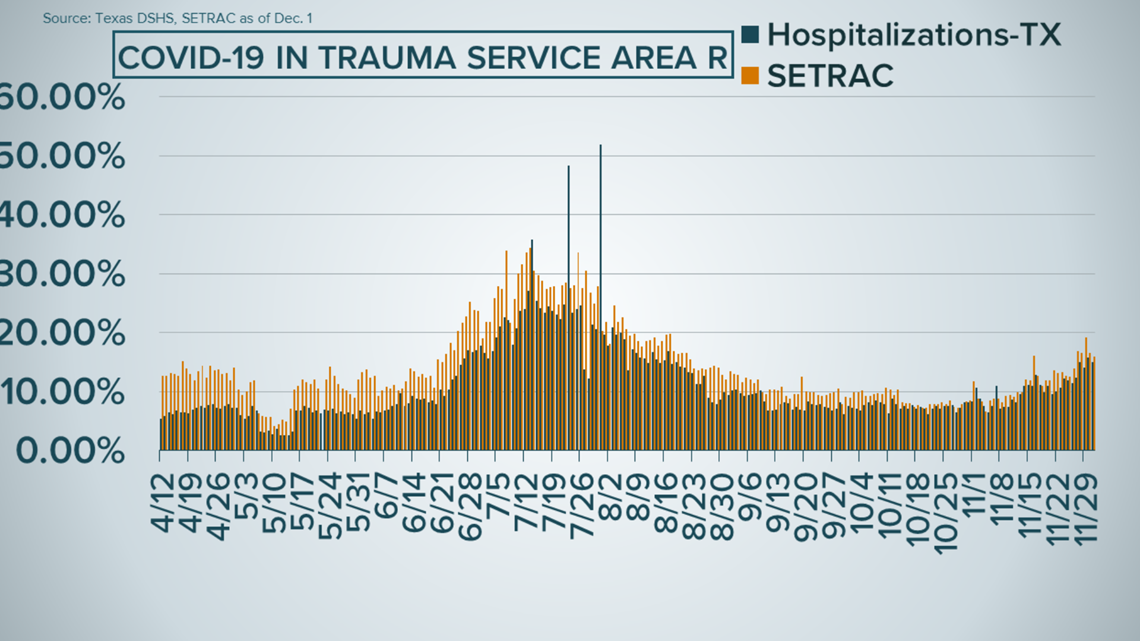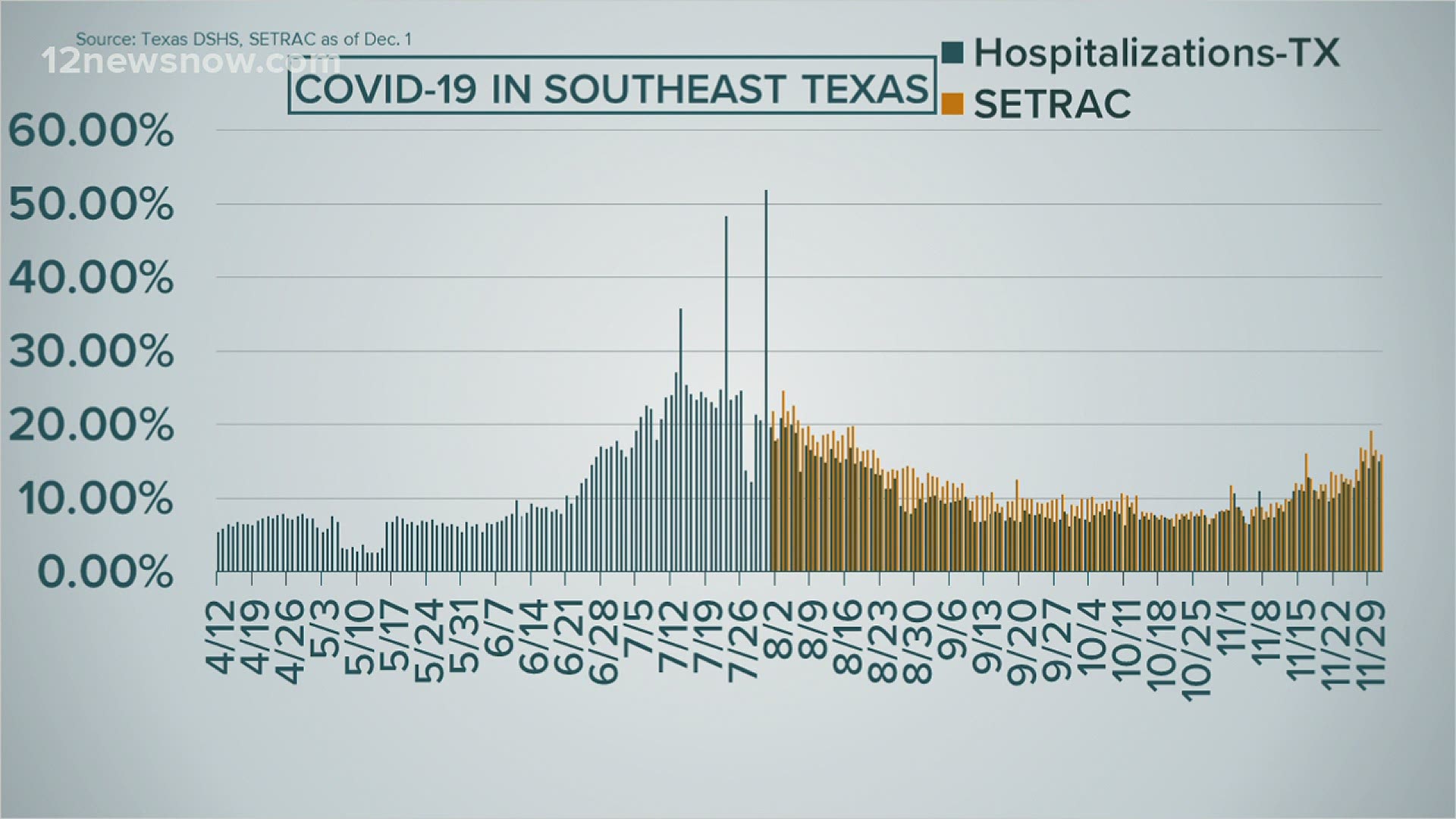BEAUMONT, Texas — Southeast Texas business owners are relieved Wednesday night after the state said they could keep operating without new restrictions.
Social distancing restrictions have to do with the coronavirus hospitalization rate, but Texas state officials said the rate is lower than regional data shows.
12News Investigates created this overlay graph. State data is in green and data from SETRAC is in Orange.


The math seems unclear, partly because state officials are not being direct about how these numbers are calculated.
Some Southeast Texas officials are expected to be implementing more restrictions Thursday.
Texas Gov. Greg Abbott's executive order GA31 from September said counties are considered to have high hospitalizations if the percentage of hospitalized COVID-19 patients compared to total patients is above 15 percent for seven consecutive days.
Then in October, the order changed, stating that officials should compare the percentage of hospitalized COVID-19 patients to total hospital capacity.
The Southeast Texas region includes nine counties. As of Dec. 1, the hospitalization rate in this area is 14.9 percent. SETRAC's calculations show 15.9 percent for the same day.
"We have a couple of forms up there where they fill up daily," SETRAC special populations preparedness coordinator Hilal Salami said. "Then we get those forms, compile them, clean them up, post them and then send them to the state."
Texas Department of Health and Human Services did not respond to multiple requests from 12News for a clearer answer for how their numbers are calculated.
Hardin County Judge Wayne McDaniel said he was on Wednesday's call with Texas DSHS and he and other Southeast Texas leaders were surprised when the state did not ask them to scale back on business capacities.
He said the hospitalization rates have always came from SETRAC previously. Before the conference call, Southeast Texas officials had no idea DSHS was looking at different numbers, he said.
"I can tell you that Judge Gothia questioned Dr. Hellerstedt pretty hard, and so did Emergency Management Coordinator Mike White, as to why there would be such a significant difference between what DSHS is showing and what SETRAC is and we did not get an answer," he said.
Lamar University associate professor Dr. Praphul Joshi works closely with Southeast Texas leaders and helps crunch the numbers. He said he receives data directly from hospitals on a daily basis.
"So I think what we submit daily, and what Judge Branick has, is far more accurate information," he said.
But state officials are only considering their numbers to make decisions on scaling back business capacities.
"It makes sense that this is what they're going by, but I have no idea where the data comes from," McDaniel said. "To business owners that are worried about this, I'm worried about it as well. I'm equally as worried that so many people are getting sick and hospitalized."

